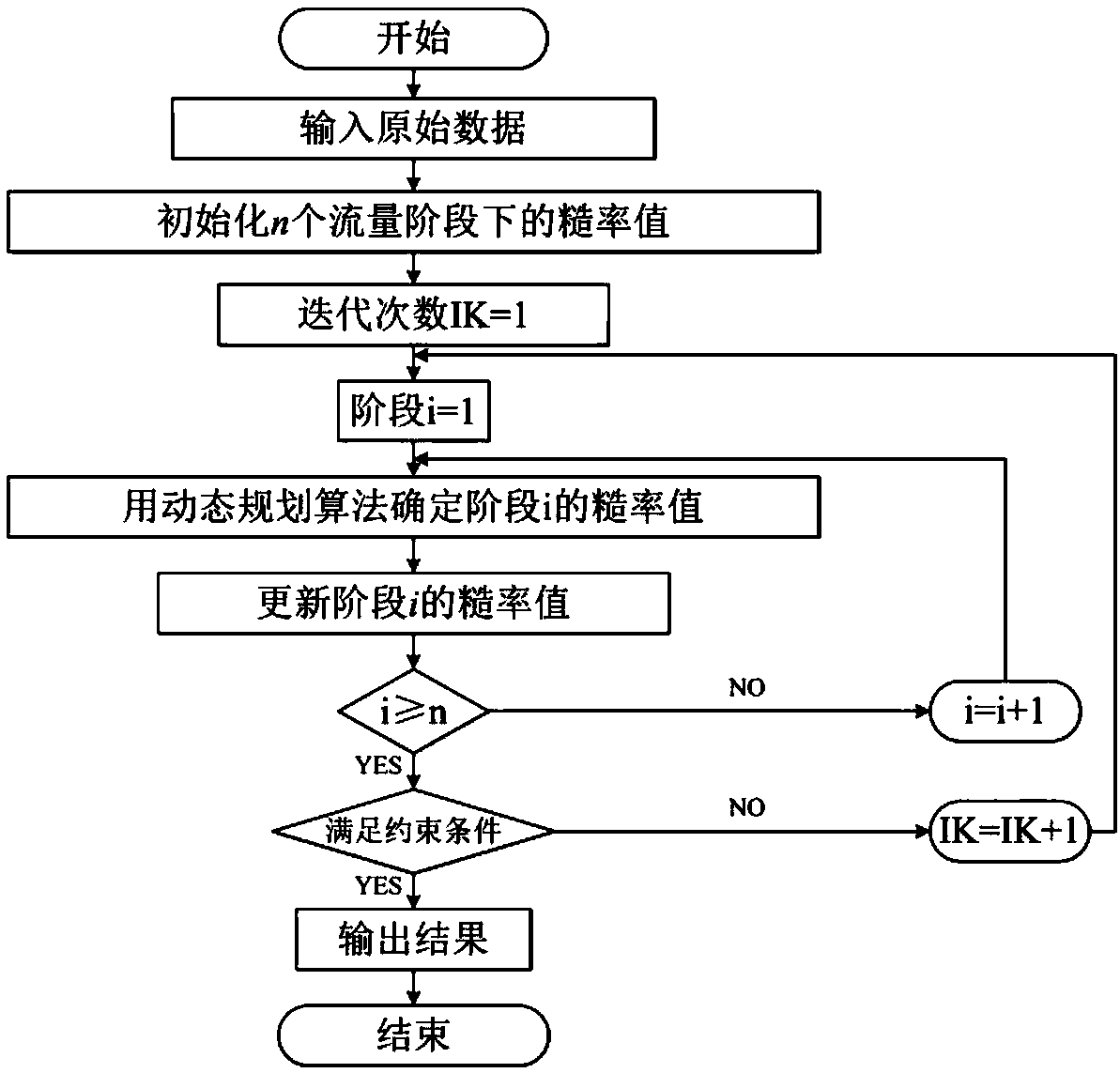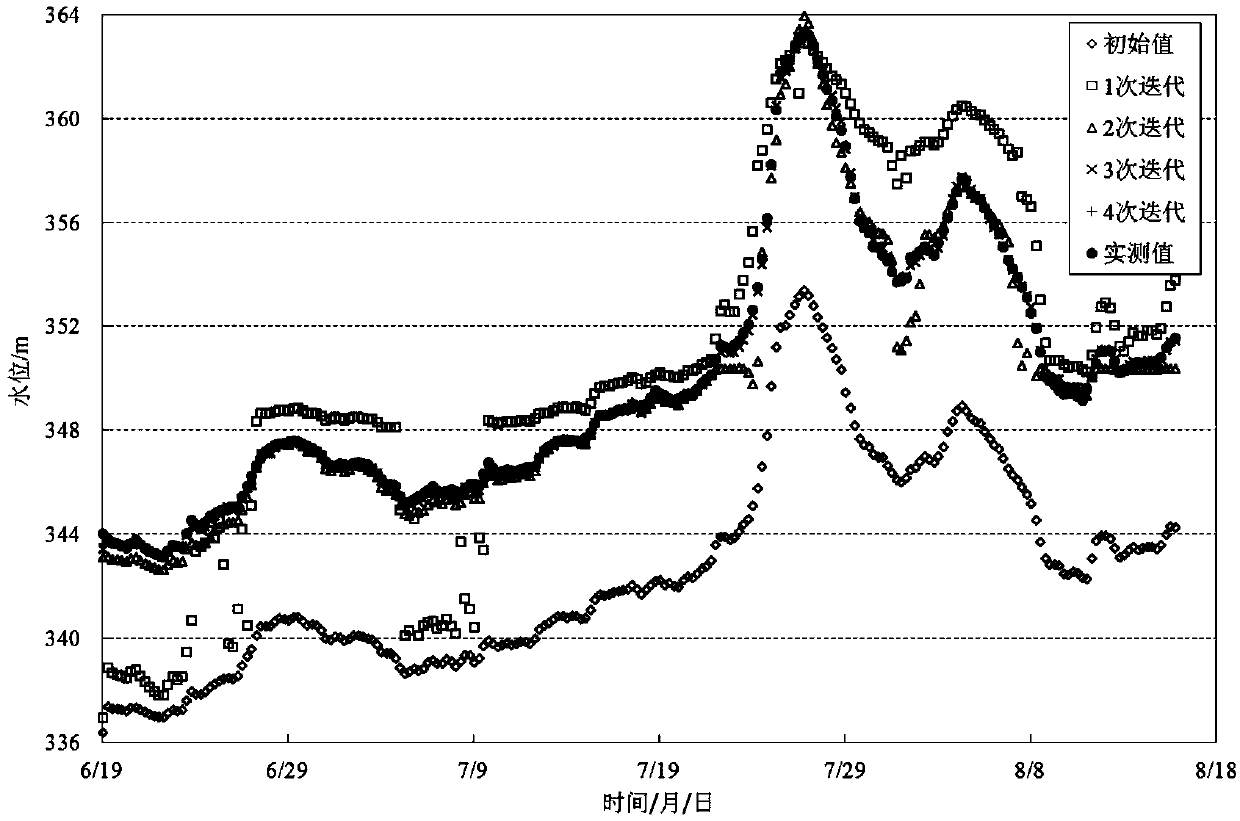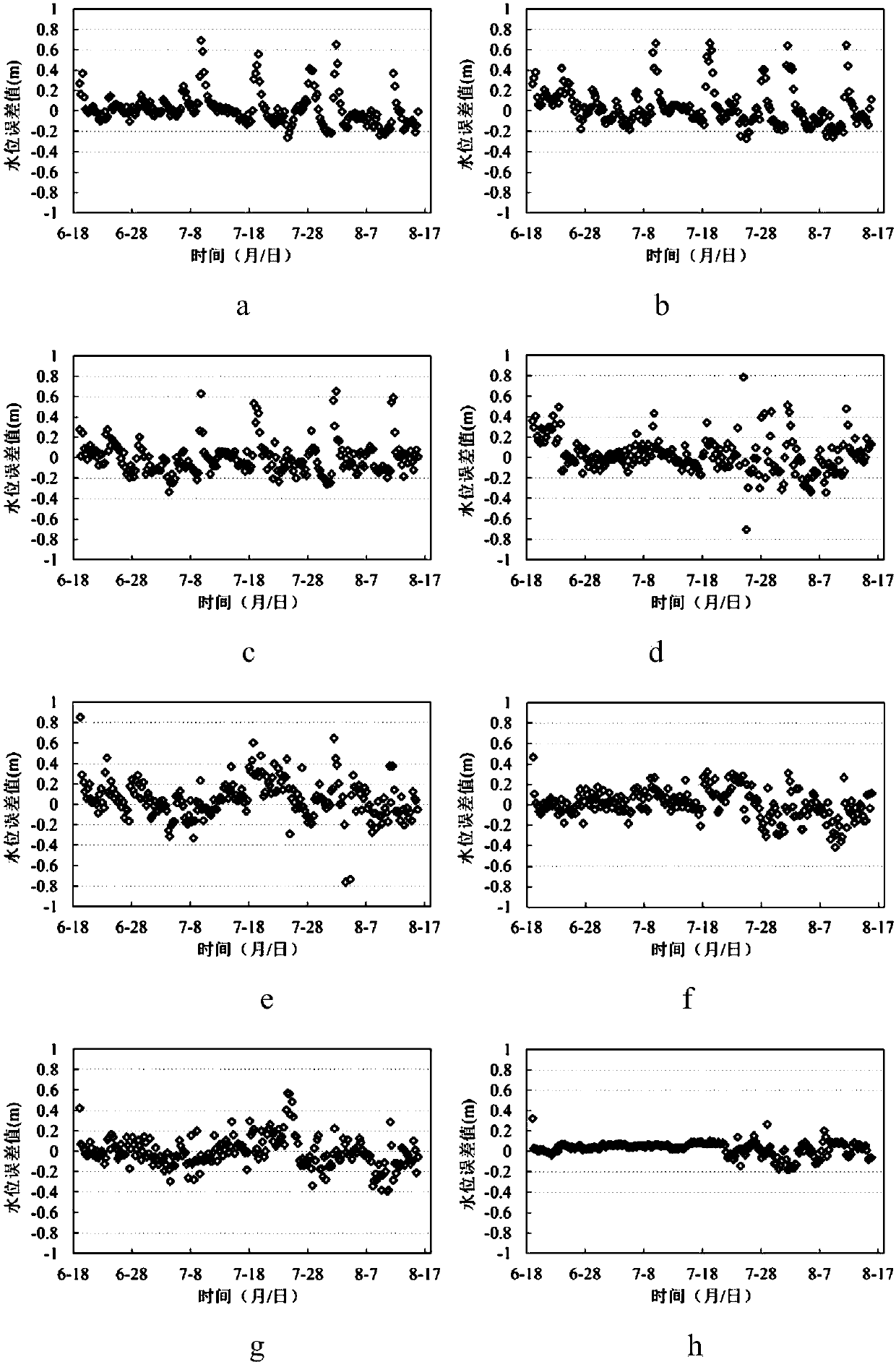Dynamic planning successive approximation method-based channel roughness inversion method
A technology of successive approximation and dynamic programming, applied in special data processing applications, instruments, electrical digital data processing, etc., can solve the problem of not considering the change and difference of roughness with flow rate
- Summary
- Abstract
- Description
- Claims
- Application Information
AI Technical Summary
Problems solved by technology
Method used
Image
Examples
Embodiment Construction
[0039] The present invention will be described in detail below in conjunction with the accompanying drawings. The present invention proposes a river channel roughness inversion method based on dynamic programming successive approximation method, including
[0040] Step 1. Use a one-dimensional hydrodynamic model to simulate the change of water flow in open channels and rivers. The roughness n in the model is calibrated by an optimization method, with the goal of calculating the minimum sum of squares of water level errors in the river section within the calculation period as the goal, and establishing the roughness of the river. The rate inversion model is used to invert the roughness under different flow rates;
[0041] Step 2. Use the dynamic programming successive approximation method to invert the river channel roughness, and decompose the roughness inversion under different flow levels into a multi-stage optimization problem. Each calculation only optimizes the roughness ...
PUM
 Login to View More
Login to View More Abstract
Description
Claims
Application Information
 Login to View More
Login to View More - R&D Engineer
- R&D Manager
- IP Professional
- Industry Leading Data Capabilities
- Powerful AI technology
- Patent DNA Extraction
Browse by: Latest US Patents, China's latest patents, Technical Efficacy Thesaurus, Application Domain, Technology Topic, Popular Technical Reports.
© 2024 PatSnap. All rights reserved.Legal|Privacy policy|Modern Slavery Act Transparency Statement|Sitemap|About US| Contact US: help@patsnap.com










